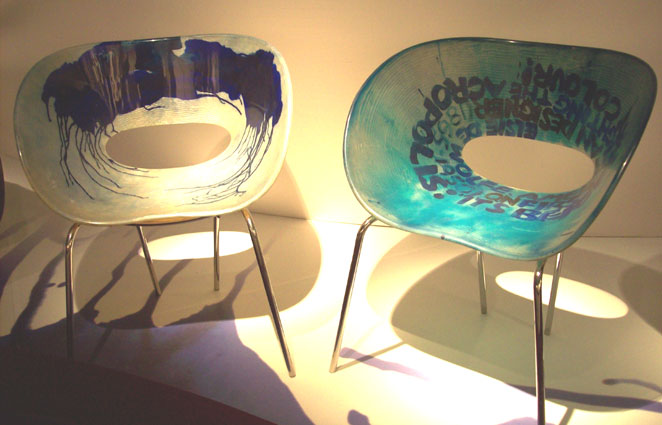Photos : Ricardo Fernandes
Tribune
Vitamine A: DESIGN + ART = RON ARAD, by Ricardo Fernandes
One of the various functions of Art is to work as an instrument of transformation of the imaginary universe into visual, sound and aesthetic expression. This definition is set in chronological time, explaining in a simple and clear way the different phases through which the human process of artistic creation has passed, socio-political changes and the progress of human life on earth, as if in a mirror reflection. Already in the 4th century BC, Aristotle defended that art imitates life, from poetry to visual arts. Centuries later, this thesis was contested by some thinkers and vehemently redefined by Oscar Wilde at the end of the 19th century, who wrote in his 1889 essay The Decay of Lyingthat “life imitates art much more than art imitates life” throwing us into a vicious circle of questions, which have led us into the present days, period of contemporary art, era of high technology and total confusion of definitions.
In one of the focuses of this continuous discussion, we glimpse Design, characterized as a technical process of creation during the industrial revolution begun at the end of the 18th century in Europe, acquiring over time its own space. Today, with high technology and in the era of internet when there is a constant demand for creative process not only turned into function, but allied to aesthetics, Design retakes its path, redoing its dialogue with Art, using it as inspiration in its process of development, recognizing that since the beginning of human history, Design was a branch of the Arts and drinking from the same source.
Born in Tel Aviv in 1951, graduated at Jerusalem Art Academy, Ron Arad lives and works in London, where he has been living since 1973. Prioritizing technology and researching various materials, exploring each object with its characteristics and its functions … neither designer nor architect nor artist, Ron Arad has always preferred not to be included in any of the definitions, and does not feel obliged to follow any rules, no matter or discipline imposed, so that he can freely do what he well understands and what he loves to do: architecture and design focused on a process of artistic creation.
Researching the natural colors of each material, the designer gives up paints and coatings, searching in each material its relation with its own colors and textures. Curved lines that accommodate and support weights, continuous modules that turn into curved and sensual designs, always maintaining the function of the object.
Ron Arad is the creator of great design pieces such as the Bookworm Book Shelf created in 1993, the Fantastic Plastic Elastic (FPE) chairs created in 1997, the 1999 Tom Vac chair, the renowned Victoria and Little Albert collection of 2002 , the Ripple Chair created in 2005, the Pizzakobra lamp conceived in 2007, among many other pieces, which today we can also pick up and discover during our wanderings in the Marché aux Puces de Saint Ouen, in search of the most valuable pieces of artistic design for our collections.
Ron Arad has always intrigued me with his bold industrial vision, his pop-street-aesthetic, with one eye on quality production and the other on contemporary art. He follows the movements of popular expressions and the possibility of creating a sizeable dialogue where there is neither the beginning nor the end of History.
Ricardo Fernandes, 2019
The Association of Art Museum Curators (AAMC), New York, USA
International Association of Art Critics (AICA), Paris, France
Association for Art History (AAH), London, United Kingdom



